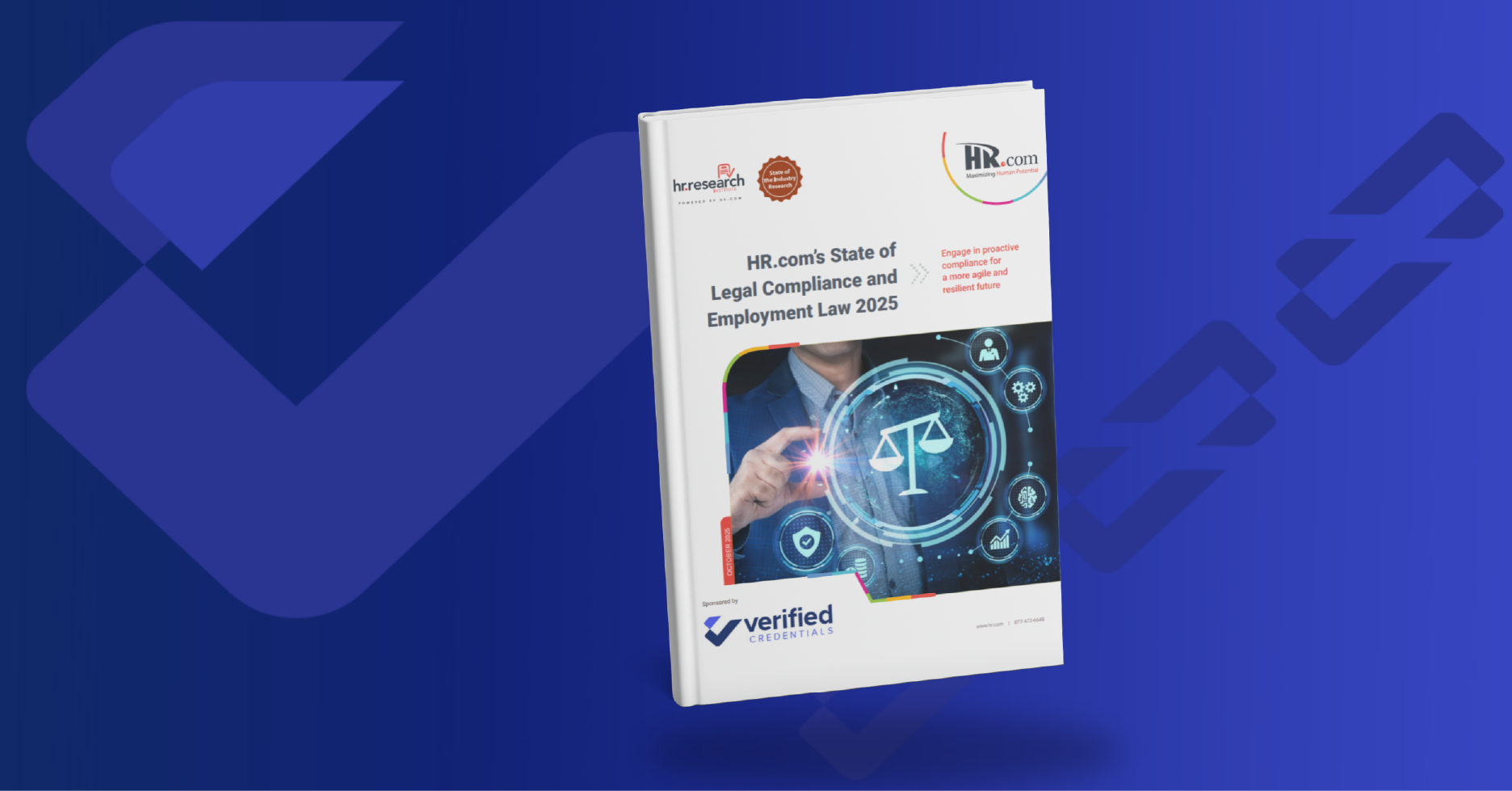A Quick Guide to Understanding the 7-Year Lookback Rule in Consumer Reporting
If you are involved in your team’s background screening and hiring process, you'reprobably familiar with the “7-year lookback rule” for criminal ...
With Verified Credentials' mobile-first candidate experience, you meet candidates where it's most convenient. Learn how easy we make it.
|
|
Now offering DOT services!Get your drivers on the road quickly and meet DOT regulations. |
Gain clarity about your compliance responsibilities with our new Adverse Action Guide! Use the interactive map to learn what regulations apply in your area.
Verified Credentials is a leading background screening company. Since 1984, we’ve helped validate and secure relationships through the use of our comprehensive screening solutions. We offer a wide variety of background checks, verifications, and innovative screening tools.

Our accreditation confirms that our policies, processes, and employee training meet rigorous industry compliance standards.
3 min read
Verified Credentials Dec 21, 2022 12:00:00 AM
Clare Horvik, Vice President of Marketing for Verified Credentials, invited Ben Mones, CEO of Fama Technologies, for an interview to discuss a hot topic – social media screening.
Horvik: Ben, thank you so much for talking with me. You're on the front lines of social media screening. There's so much for people to learn about what it is, how it's leveraged, and how it is wise for candidate selection. As a true expert and pioneer in social media screening, how would you start from a high level and describe what social media screening is?
Mones: Well, first, it's great to be here, and I'm looking forward to sharing a productive conversation about this. So, I like to start by breaking down what social media is not. This is not a score. This is not a thumbs up or a thumbs down. It's not a yes or a no or a recommendation on a candidate based on what they tweeted, what they posted, how many restaurant check-ins they have, or pictures of their dog. That's not what this is. Instead, think of social media screening as a way for employers to get insights from publicly available information on the web about the candidates coming into their organizations. It's much more of a question: "Is this person posting things that might be intolerant, threatening, or harassing?"
Horvik: I like that you touched on publicly available information. I think that matters to many people. Not every thumbs-up and thumbs-down are tracked and monitored when you're screening, and employers don't necessarily care about that. It isn't pouring through everything they've ever done and getting an intense report on them. I think that's a misconception that can be out there for candidates.
Mones: Think of this as a way to align your new hire with the values of your culture and your employees. Will this candidate embody the character that will contribute to a safe and welcoming workplace? Imagine that they're evangelizing your brand with your customers day in and day out and talking with or meeting your clients. You want to know that they will continue to uphold those brand values. So, think of social media screening as a more compliant way to glean insights from publicly available web content.
Horvik: Let's talk about employers' attitudes toward social media screening. Have you seen a change in their approach to it in the past year or the past five years? Are you getting a sense that there's a little bit more acceptance and adoption of social media screening?
Mones: Absolutely. We started Fama a little less than eight years ago. I remember when people would say, yeah, social media, my kids are on social media. But what does that have to do with hiring? Most people are considering that sort of thing. Let's look at some of the data over time. When we began, about 44 % of employers were doing some form of social media screening, "Googling" candidates, if you will. But now, the last data that came out has about 80% of employers doing some form of "Googling" or social media checks as part of the candidate fulfillment or candidate vetting process.
Horvik: When you say that many employers are searching online for candidates, do you have any insight about them doing that in-house?
Mones: Of course. Say, for instance, that I'm an employer, and I go on a candidate's public Facebook page, and I see a pregnancy announcement, or maybe I see that they have a disability. In cases like this, with protected class information, I may see things about a candidate that I shouldn't see. I shouldn't consider any of these things as a part of the pre-employment screening process. So, it wasn't until the rise of third parties like Fama, working together with Verified Credentials, that companies began to be able to limit the aperture of what would even be reported as part of a social media check. They work to find John Doe in a sea of John Does by going to a third party. We help by blinding the employer and, in some ways protecting them. By using a third party, the only things they could potentially adjudicate are those that they select as being relevant to the job they're filling or the company that this person is joining. See if it aligns with the things you already care about and the characteristics you consider a good hire for the job in question.
Horvik: Ben, explain to our readers the kinds of things employers can see in a search.
Mones: Consider that you'd have to do it yourself in the old days. You'd have to go to a person's Twitter account, press Control-F and search for a swear word. But, if I'm using Verified Credentials, I can say, okay, these are things that I care about. I want to consider intolerance and threats, maybe…[read more]
Like what you’re reading? This whole conversation may open your eyes to a paradigm shift in background screening – Take a look at the full interview transcript! Feel free to share with your team, too!

If you are involved in your team’s background screening and hiring process, you'reprobably familiar with the “7-year lookback rule” for criminal ...

Whether your program supports nursing students or other healthcare tracks, every clinical placement requires a unique mix of verifications,...

Navigating compliance is a key concern for HR pros in any industry and keeping up with legislative changes while anticipating future developments is...

Companies love to talk about making “investments for the future.” Whether opening a new sales office or purchasing new equipment, each move is meant...

Your strategic workforce likely includes traditional workers, your full-time and part-time staff. It may also include alternative workers, also known...

With a new year approaching, you may be thinking about changing what may not be working, from recruiting strategies to outsourced human resource...